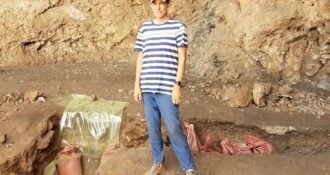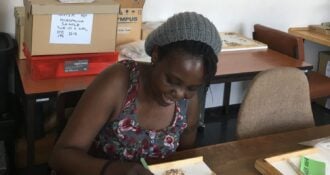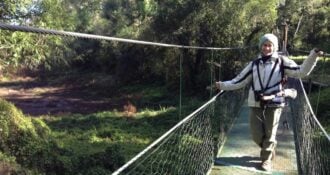We are happy to introduce another one of our fall 2014 grantees, Shelby S. Putt, PhD candidate from the University of Iowa. Her dissertation project is entitled “Investigating the co-evolution of language and toolmaking: An fNIRS study.”

Our language and cognition are arguably the features that most distinguish us from other species, and yet, we still know so little about the evolution of these features. As products of evolution, our brains may hold clues to the ancient cognitive and linguistic capabilities of our distant human ancestors. For example, how our brains process the same stone toolmaking behaviors that early hominins practiced may be the closest we ever come to observing extinct hominin cognition in action.
There is evidence to suggest that language instruction reorganizes the cognitive networks involved in learning to make stone tools (Putt et al. 2014). For this reason my team and I are exploring how the act of making stone tools (i.e., flintknapping) is processed differently in the brain depending on whether it was learned verbally or nonverbally. This is an important question, as early Homo probably did not possess fully modern language and also may not have actively taught their young how to flintknap.

My research employs a cutting-edge brain imaging technique known as functional near-infrared spectroscopy (fNIRS) to measure brain activity while human subjects learn to make Early Stone Age tools. This is the first study to use fNIRS to address paleoanthropological questions, and in many ways it is an ideal neuroimaging technique for observing brain activity during stone tool manufacture.
The results of this study will address the motor theory of language origin, which argues that language developed out of a pre-existing motor system, such as that used by early hominins to make relatively complex stone tools. It is my hope that this research and future experiments will help pave the way to a clearer picture of how and when humans began to communicate and think with language.
Further reading:
“The role of verbal interaction during experimental bifacial stone tool manufacture” – Lithic Technology
“Validating a new methodology for optical probe design and image registration in fNIRS studies” – NeuroImage






Comments 0